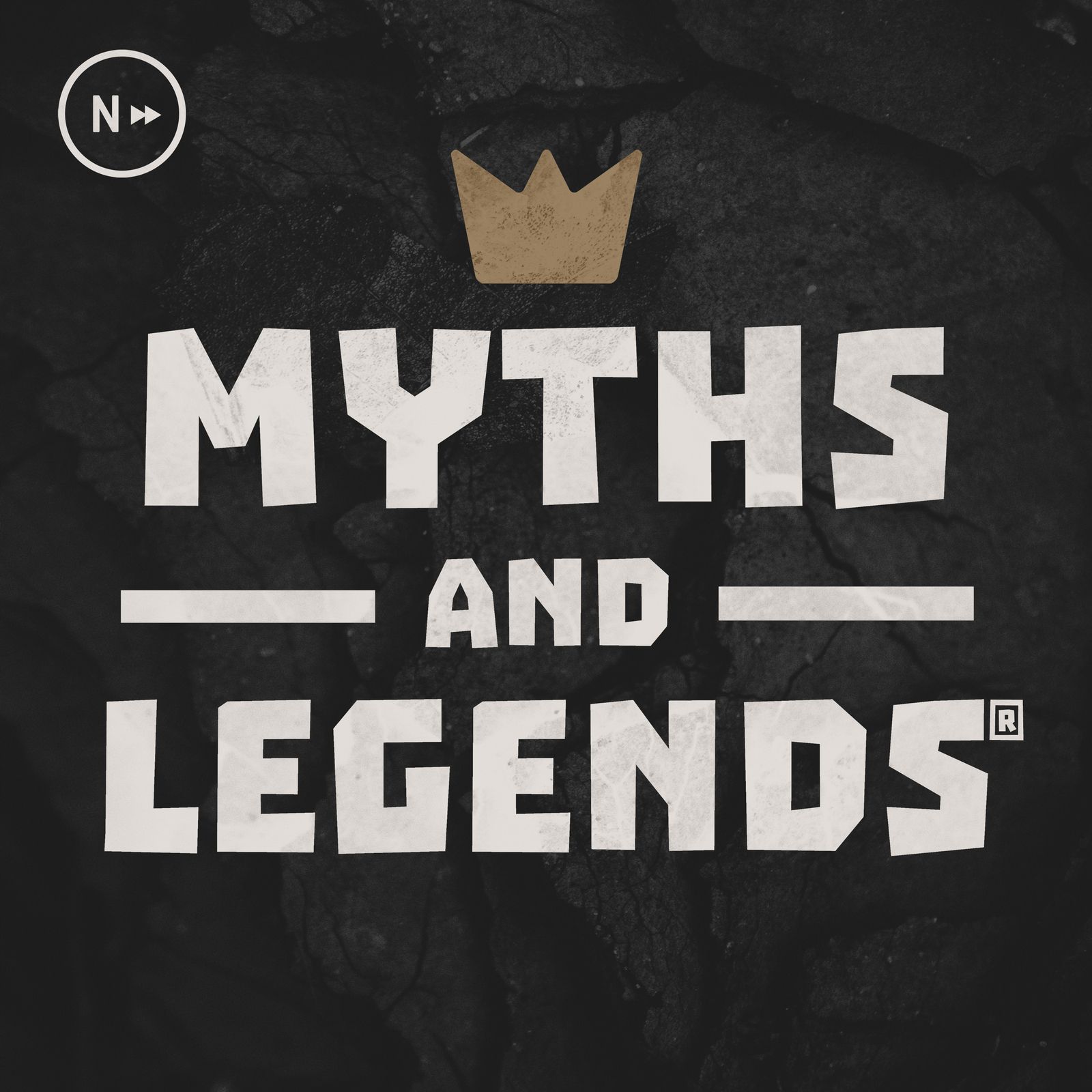
Myth Monsters
A bite sized look into the monsters of global folklore, cryptozoology and mythology with your host, Erin. Jump in and learn about your favourite monsters from Gorgons to Kelpies, to Wendigos to Bigfoot. Stay spooky every Thursday with a new episode with a new monster from another culture. Get in touch on Twitter at @mythmonsterspod
Myth Monsters
Ifrit
For this week's episode, we're looking into Islamic folklore to the terrifying Ifrit! How do these monsters relate to the very similar Jinn? How can you make sure you don't become one? Find out this week!
You can find us on:
Social media:
INTRO:
Hello and welcome to Myth Monsters, my name is Erin and I’ll be your host for these little snack bite size podcasts on folklore and mythical monsters from around the world.
These podcasts focus on the actual cryptids, folklore and mythic monsters from global mythology, rather than focusing on full stories of heroes and their big adventures.
I’ll also be dropping in some references that they have to recent culture and where you can see these represented in modern day content so you can learn more, and get as obsessed as I am about these absolute legends of the mythological world.
Whilst you’re listening to this episode today, on release day that is - I’m in Disneyland Paris, living it up with the mouse and having a very spooky time at their Halloween festival, so I hope you’re jealous. I’m recording this before I go and I’m honestly right excited.
DESCRIPTION:
ANYWAY, before I leave you, let’s talk about monsters. This week, we’re not heading anywhere specific for this one, but to religious folklore. Yes, this week, we’re looking at Islamic folklore and the horrifying demon, the Ifrit.
So what is an Ifrit? These are generally described as demons from Islamic folklore, who are associated with the underworld and are immensely powerful, wise, sly and malicious. There are a few descriptions of them, but the most common is a monster made of smoke, fire and ash that can make themselves any size, with large, smokey wings. They can be both male and female, however are more commonly found to be male - and sometimes are depicted with thorny hands, flaming eyes or seven heads with multiple deformities.
Ifrit are sometimes known as a class of creatures called Jinn, which I’ve covered on the show before, a few years back. These are the Islamic genies in English, and are not as well known for delivering wishes to mortals from their itty bitty living space as Jinn are. However, they do have that same ability.
They are classified also as demons and undead or chthonic spirits, and mostly live in the Islamic underworld, or Jahannam. However, they can be found above the ground in ruins, abandoned temples or graveyards.
They stick around here as it’s believed that if you were murdered, an Ifrit would be summoned and would wander around until the day of Judgement, or end of days. Only these types of violent deaths would summon an Ifrit, normal ones would not - however, the violent Ifrit could take revenge on your murderer for you, scare other people or even just murder the living for fun. It’s also worth noting that you could stop this transformation by driving an unused nail into the dead person’s blood by the way.
They are usually depicted as evil, wicked creatures, however, are not fundamentally evil - they sometimes can do God’s will, but are likely to interpret this in a ruthless way, such as enacting revenge by killing the other for instance.
Their main power though was possession, they could possess both the living and the dead - and they would gain powers from the Ifrit, such as super strength, stamina and bravery, but in return, the Ifrit would drive the person insane. You could control an Ifrit with a powerful magic ring, however, as you can imagine, they were quite hard to get a hold of.
Ifrits lived in a structured society, which matched ancient Arab tribal lines, and had kings, tribes and clans. They would generally marry each other, but they could also marry humans. However, they had nasty tempers and mostly embodied flame, so I’m not sure how much you’d want to be married to one either.
Now let’s talk about getting rid of them, shall we? Ordinary weapons and forces have no power over Ifrit, but they are susceptible to magic, which humans can use to kill them or to capture and enslave them. They were able to be compelled by a sorcerer if they were summoned, but would usually look for a cheap way out.
ORIGIN:
Moving on over to etymology, the word Ifrit is of course, Arabic. However, the meaning of it is contested amongst scholars, with one set believing it means ‘to rub with dust or to roll in dust’ and others believing it means ‘to create’. There are also those who believe it is more a defining characteristic in demons, used to describe sly, malicious, wicked and cunning beings.
Eventually though, through folklore, the term was developed into a designation of demon and they were put to beings like Shayatins (or demons) who prey on women OR as spirits of the dead. If you want to know more about Shayatins, I covered them not too long ago in their own episode. Interestingly, in Turkish, the term Ifrit means demon of the underworld - which is pretty exact. In Islamic texts, the word is always linked to the Jinn, but because Jinn are also very vague - we assume there is a bigger connection.
For their history, we’re going straight to the Quran, the holy text of the Islamic faith. Now of course, this has no writer or date attached to it, but we do believe it was written in around 610 - 632 BC, which does make it really, really old.
In the Quran, they are mentioned in the 27th chapter, where an Ifrit offers to carry the throne of Bilqis, queen of Sheba to King Solomon and he says the following; “I will bring it to you before you rise from your place. And verily, I am indeed strong and trustworthy for such work.” The task is not given to him, but to someone with knowledge of the scripture in the end.
In one of the Hadiths around Muhammad, an Ifrit also makes an appearance, and appears as an Ifrit amongst the Jinn. He disrupts Muhammad’s prayers and threatens him with his fiery presence, and Muhammad is taught a prayer by the Archangel Gabriel to defeat him. The purpose of this story is to explain that God sent the Ifrit so Gabriel could teach Muhammad and the Muslim community to overcome their fear of demons in the night.
Lastly, in the story of the Prophet Job, where he is tested by Iblis, the leader of all demons, he asks God to test him. So Iblis summons his most powerful demons, including Shayatin and Ifrit, where they turn into storms and whirlwinds of fire to destroy Job’s work.
My favourite Ifrit story is actually a Persian story from 1150 called Maham the Wayfarer. In this story, Mahan travels to a demon-infested desert where he is presented a horse by one of these demons, and then it rides off with him and becomes a seven-headed monster.
Mahan runs and finds shelter in an oasis owned by an old man, eventually the old man likes him enough to let him inherit his estate and marry a beautiful woman. However, as the old man leaves for the wedding he warns Mahan that he must not descend from the perch until the old man is back. After that, the house, garden, and wife will belong to him.
The beautiful girl enters the room and has the face of a Peri, a fairy from Persian folklore, and Mahan is instantly overwhelmed by lust and passion, and ignores the old man’s warning. Mahan takes hold of the girl, and she suddenly turns into an Ifrit. The demon explains she was truly a fairy, but turned into a demon because of Mahan's uncontrollable lust, and this is God’s punishment.
The Ifrit then tells him that he now must tear Mahan apart, because if he didn’t, the monster would be no true demon. As well as that, the Ifrit is super embarrassed that he had to show up as a fairy. Just as he’s about to die, a rooster squawks, and everything demonic vanishes from sight in the light of the morning.
These aren’t the only stories around Ifrit either, there are two from 1001 Nights, the Arabic stories that I won’t go into detail on. But they are still really prevalent within Islamic culture and belief, and I think they’re a great monster as a religious hellion too.
The belief in Jinns and Ifrit is believed to have originally come from Ancient Egypt and the idea of Ka, which was that the soul came in segmented parts. The part of that person’s soul that was evil, brought out by the murder of them, would develop into an Ifrit in the graveyard after burial.
Now of course, with mythical comparisons - we’ve kind of mentioned both of them. Jinns are their closest mythical monster sibling, being the more benevolent version of them and where Aladdin’s genie derived from. If you were to compare these two in Disney terms, Genie is a Jinn and Jafar at the end is an Ifrit - if that makes it easier to understand I guess.
Shayatin is more an umbrella term for demon in Islamic folklore, which Jinn and Ifrits are classed as - but again, if you want to know more about them, check out their specific episodes. I also mentioned the Peri fairy earlier and we also have an episode on them if you’re interested in learning more.
CULTURAL SIGNIFICANCE:
Now onto modern media, there’s a load of media for Ifrits but also generic Genies, so I’ve popped all of these into this one.
For art, there is a lot of portrait art - but unfortunately, with the nature of drawings from holy books and scrolls, they’re not really named or have artists attached to them, so it’s lame but I’d recommend looking up Ifrit up on Google and looking at the art for them. But honestly, even cooler is the independent art this week, especially that out of video games - I’d really recommend having a look at them.
In movies, we have; Aladdin, Wish Dragon, Aladdin and the Return of Jafar, Clash of the Titans, Kazaam, My Darling Genie, Fantasia, Djinn, The Curse of Sleeping Beauty, The Field Guide to Evil, Wishmaster, When Evil Calls & Superfantagenio.
For TV, we have; True Blood, Genius Genie, Pixel Pinkie, Creepshow, Big Wolf on Campus, The Genie from Down Under, Rocko’s Modern Life, The Real Ghostbusters, My Little Pony, American Gods, Kamen Rider Den-O, Miraculous Ladybug, Shazzan, The Fairly Odd Parents, Legacies, Special Unit 2, Once Upon a Time, I Dream of Jeannie, Danny Phantom, Supernatural, The Twilight Zone, Aladdin: the series, Shimmer and Shine, Charmed, The Magicians, Legacies, Ultraman 80, Wizards of Waverly Place, Yogi’s Gang, The Smurfs & Heathcliff & the Catillac Cats.
In video games, we have ones such as; Final Fantasy, Terraria, World of Warcraft, Sonic and the Secret Rings, Pokemon, Rise of Legends, Monster Rancher 2, The Secret World, Guild Wars, Dragon's Crown, Cuphead, Ape Escape, Destiny, Arcana, EXTRAPOWER, Golden Sun, AdventureQuest Worlds, Shantae, The Sims, Uncharted 3: Drake's Deception, Age of Wonders, Quest for Glory 2, Might and Magic, King’s Quest & Beyond Oasis.
My book recommendation this week are either The Encyclopedia of Eastern Mythology: Legends of the East by Rachel Storm for a great summary of these Arabic folklore stories or The World of Angels & Demons: What Does Islam Say? by Zaid Shah for some more specific demonology studies within Islam.
DO I THINK THEY EXISTED?
Now it’s time for, do I think they existed?
Do I think demons exist? Not entirely sure if I’m completely honest. I did say in my Jinn episode, which was a long time ago now and definitely could do with a slight rewrite now I’ve relistened, that all magic on Earth is believed to be from Jinns and Ifrits, and that’s a super interesting idea to me.
Whilst I don’t think it’s great that you could sell your sanity for help with a few bits, but even then, are you really getting what you wish for properly with this monster rather than a Jinn? How could you tell them apart when they can turn into anything, who knows?!
But I think this one might be a no for me, it’s a bit fantastical - and whilst the idea of demons is something I don’t believe in through my religion and upbringing, some people and in Islam especially, that might seem super feasible - so it’s all subjective really.
Nonetheless, I love this type of monster and I’m glad to have covered both the benevolent and the malevolent types of Jinn, as well as many more to come with religious folklore monsters such as these.
But what do you think? Did the Ifrit doom mortals on Earth? Let me know on Twitter!
OUTRO:
I love covering these types of religious monsters, otherwise I’d never know anything about them! A super interesting one, and I hope you enjoyed learning about this one as much as I did!
Next week, we’re heading over to the US for what seems like a new urban legend, but it’s been around since the 1950’s. We’re going to be summoning The Hook next week, so I hope you’re not listening to this in your car at make-out peak next Thursday!
For now, thank you so much for listening, it’s been an absolute pleasure. If you enjoyed this podcast, please give it a rating on the service you’re listening on - I’ve got the twitter for any questions, or suggestions on what monsters to cover next and I’d love to hear from you. The social media handles for Tiktok, Youtube, Threads and Instagram are mythmonsterspodcast, and twitter is mythmonsterspod. But all of our content can be found at mythmonsters.co.uk, including some very cool merchandise - you can also find us on Goodpods, Buymeacoffee and Patreon if you want to help me fund the podcast too.
Come join the fun though and share this with your pals, they might love me as much as you do.
But for now, stay spooky and I’ll see you later babes.
Podcasts we love
Check out these other fine podcasts recommended by us, not an algorithm.

FolkLands
Tim Downie, Justin Chubb
Chatsunami
Satsunami
The Howdy Beans Podcast!
Luke The Elder Bean!
My Brother, My Brother And Me
The McElroys
Myths and Legends
Jason Weiser, Carissa Weiser, Nextpod
Lore
Aaron Mahnke
Exploration: Dreamland
Exploration: Dreamland
The Neatcast
Jeremy, Zack, Mike
Effin' Cultured
Bobby, Griff, and The Rik
